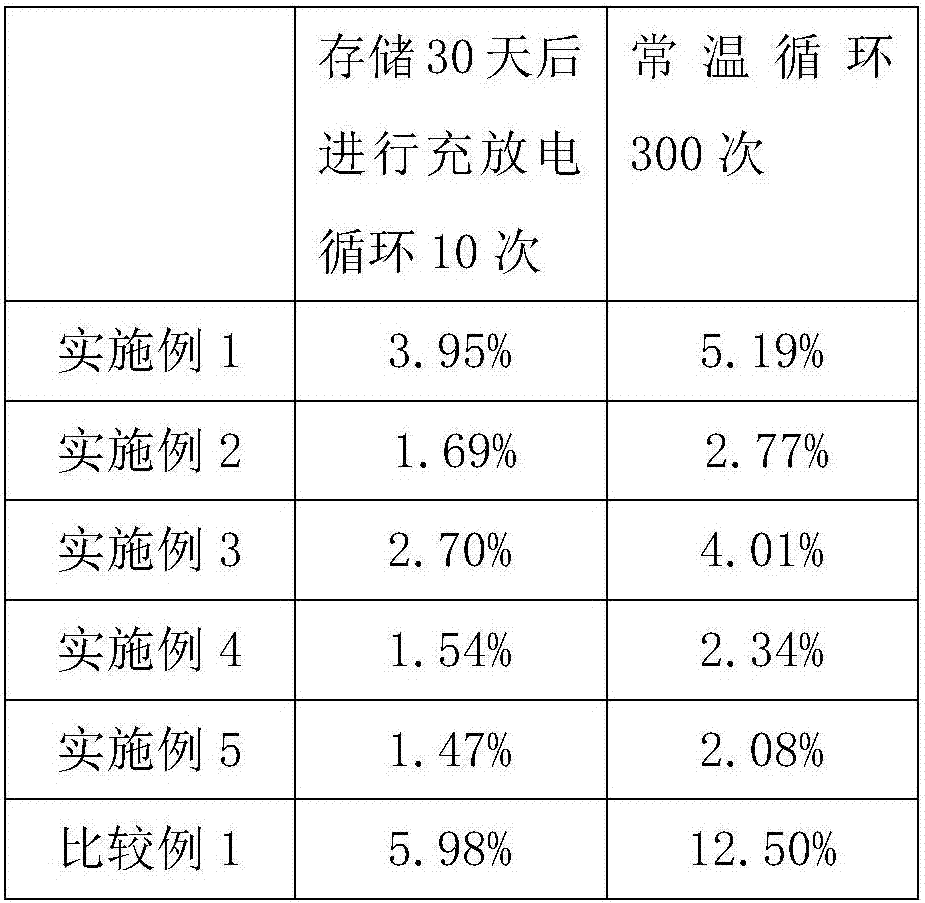Formation and matching method for lithium ion battery
A lithium-ion battery and battery technology, applied in secondary batteries, electrochemical generators, secondary battery charging/discharging, etc., can solve the problems of product function loss, failure to guarantee battery uniformity, explosion and fire, etc., and achieve consistent performance Good performance, long life, and the effect of improving storage life
- Summary
- Abstract
- Description
- Claims
- Application Information
AI Technical Summary
Problems solved by technology
Method used
Image
Examples
Embodiment 1
[0028] 1) Provide 1000 lithium-ion batteries to be formed, pulse charge the battery with a current of 0.05C, and charge the battery until the charging cut-off voltage stops; the pulse time is 10min, the interval time is 120s, and the charging cut-off voltage is 4.35V;
[0029] 2) Discharging the battery with a current of 0.2C to the discharge cut-off voltage, the discharge cut-off voltage is 2.8V;
[0030] 3), repeat steps 1-2 3 times;
[0031] 4), static aging for 5 days;
[0032] 5) Pull out the electrolyte solution that is not immersed in the electrodes in the battery case, re-inject new electrolyte solution, and seal it. The new electrolyte solution includes 1.2mol / L lithium hexafluorophosphate and carbonic acid with a volume ratio of 1:2:1 Dimethyl ester, ethyl carbonate, a non-aqueous solvent composed of ethyl methyl carbonate, and 5% by volume of fluorovinylene carbonate;
[0033] 6) Charge the battery with a current of 5C to a cut-off voltage of 4.35V, and then disch...
Embodiment 2
[0036] 1) Provide 1000 lithium-ion batteries to be formed, pulse charge the battery with a current of 0.02C, and charge until the charging cut-off voltage stops; the pulse time is 0.1min, the interval time is 30s, and the charging cut-off voltage is 4.2V;
[0037] 2), discharge the battery with a current of 0.05C to the discharge cut-off voltage, and the discharge cut-off voltage is 2.7V;
[0038] 3), repeat steps 1-2 0 times;
[0039] 4), static aging for 1 day;
[0040] 5) Pull out the electrolyte solution that is not immersed in the electrodes in the battery case, re-inject new electrolyte solution, and seal it. The new electrolyte solution includes 1.2mol / L lithium hexafluorophosphate and carbonic acid with a volume ratio of 1:2:1 Dimethyl ester, ethyl carbonate, a non-aqueous solvent composed of ethyl methyl carbonate, and 5% by volume of fluorovinylene carbonate;
[0041] 6) Charge the battery with a current of 1C until the charging cut-off voltage is 4.2V, and then di...
Embodiment 3
[0044] 1) Provide 1,000 lithium-ion batteries to be formed, pulse charge the battery with a current of 0.03C, and charge until the charging cut-off voltage stops; the pulse time is 2min, the interval time is 40s, and the charging cut-off voltage is 4.3V;
[0045] 2) Discharging the battery with a current of 0.1C to the discharge cut-off voltage, the discharge cut-off voltage is 2.75V;
[0046] 3), repeat steps 1-2 twice;
[0047] 4), static aging for 3 days;
[0048] 5) Pull out the electrolyte solution that is not immersed in the electrodes in the battery case, re-inject new electrolyte solution, and seal it. The new electrolyte solution includes 1.2mol / L lithium hexafluorophosphate and carbonic acid with a volume ratio of 1:2:1 Dimethyl ester, ethyl carbonate, a non-aqueous solvent composed of ethyl methyl carbonate, and 5% by volume of fluorovinylene carbonate;
[0049] 6) Charge the battery with a current of 3C until the charging cut-off voltage is 4.25V, and then discha...
PUM
 Login to View More
Login to View More Abstract
Description
Claims
Application Information
 Login to View More
Login to View More - R&D
- Intellectual Property
- Life Sciences
- Materials
- Tech Scout
- Unparalleled Data Quality
- Higher Quality Content
- 60% Fewer Hallucinations
Browse by: Latest US Patents, China's latest patents, Technical Efficacy Thesaurus, Application Domain, Technology Topic, Popular Technical Reports.
© 2025 PatSnap. All rights reserved.Legal|Privacy policy|Modern Slavery Act Transparency Statement|Sitemap|About US| Contact US: help@patsnap.com

